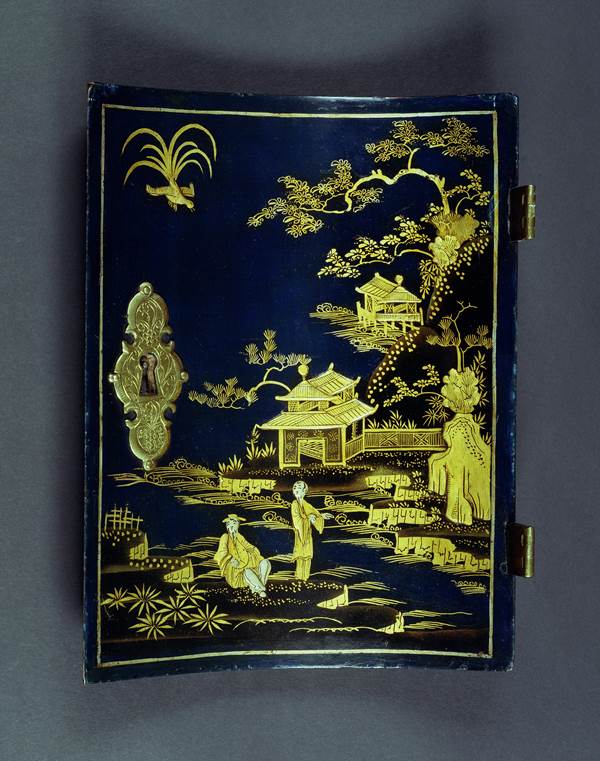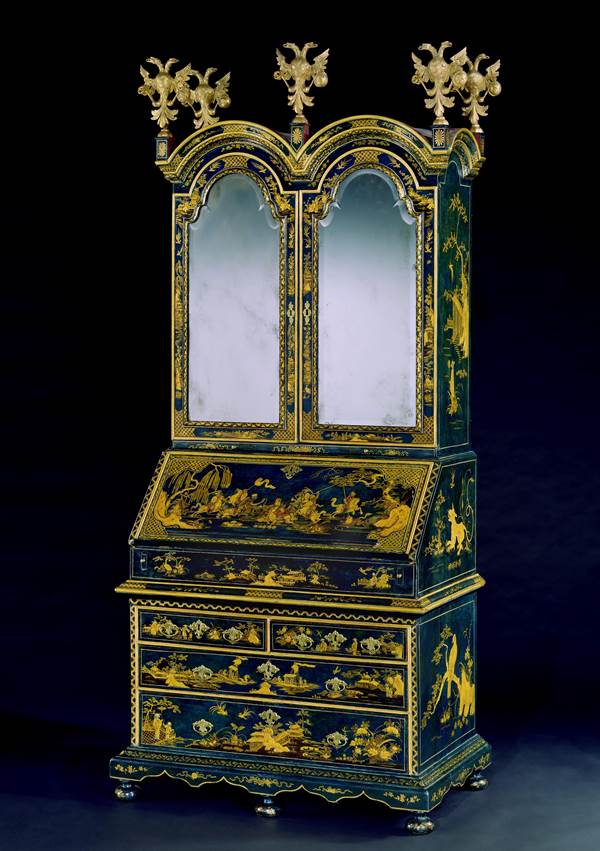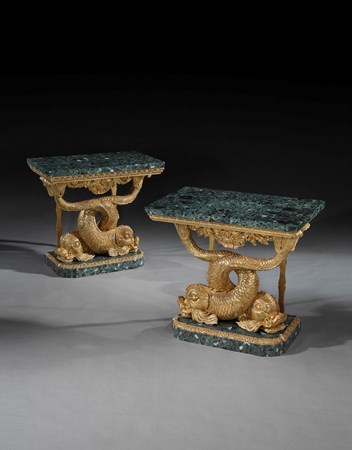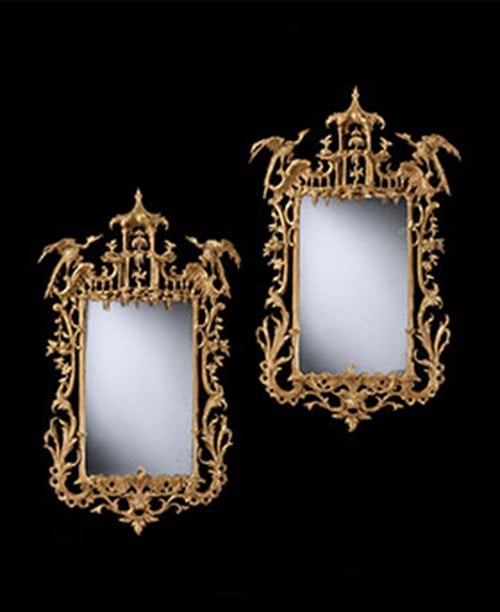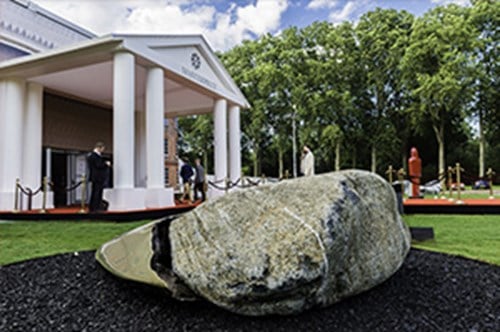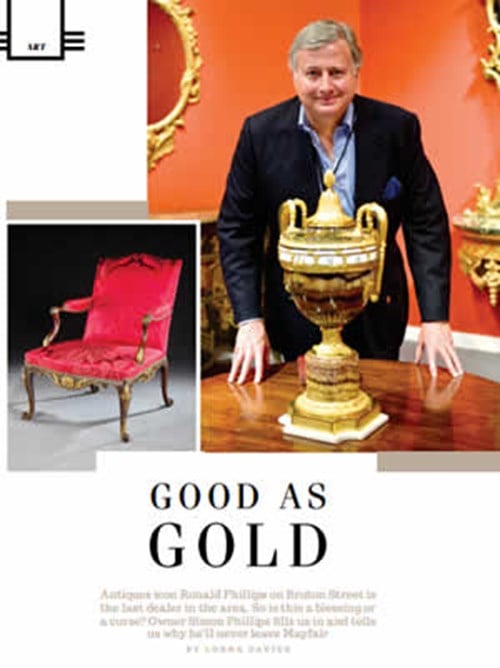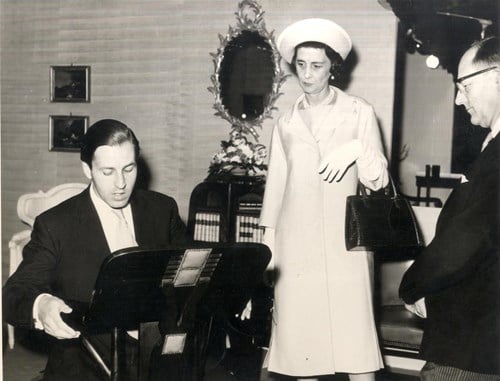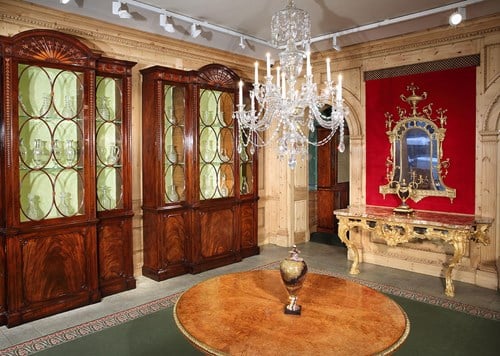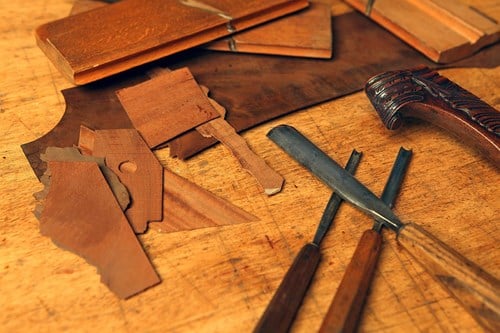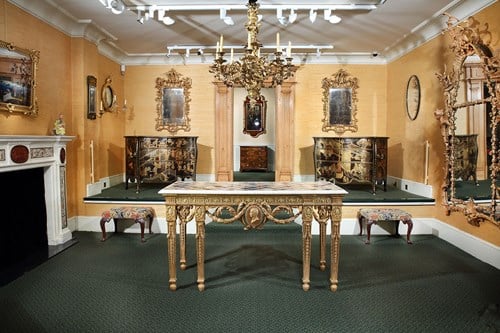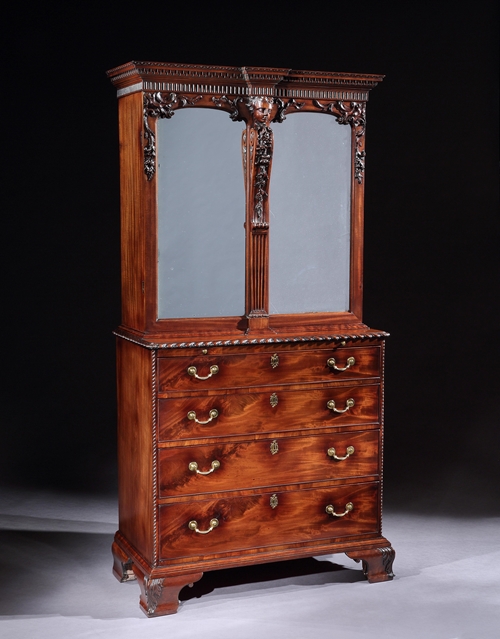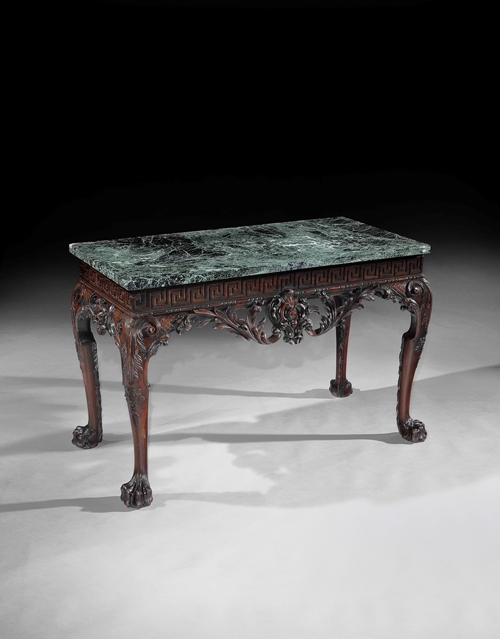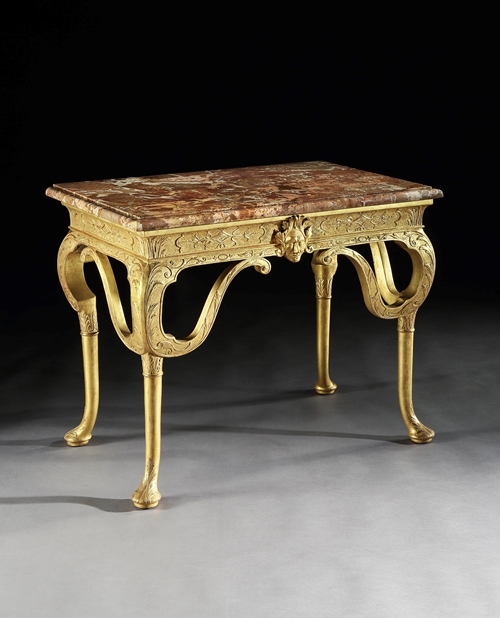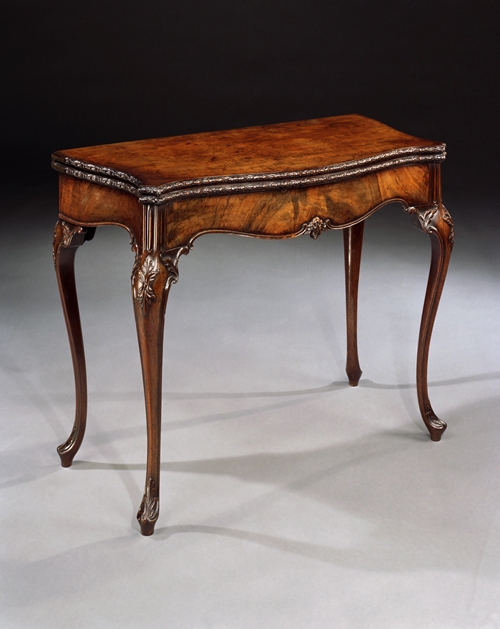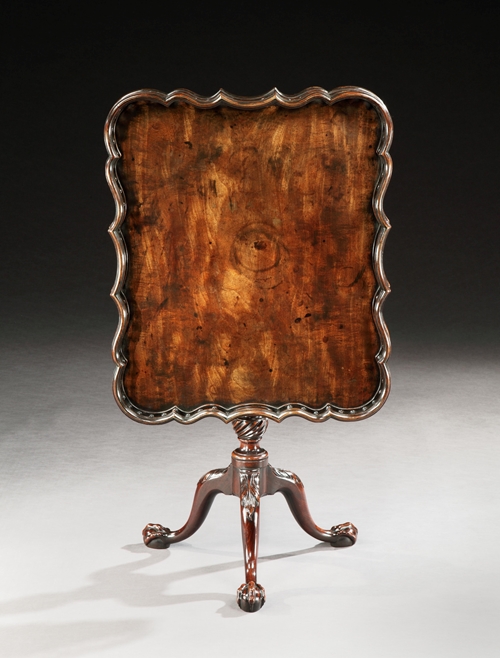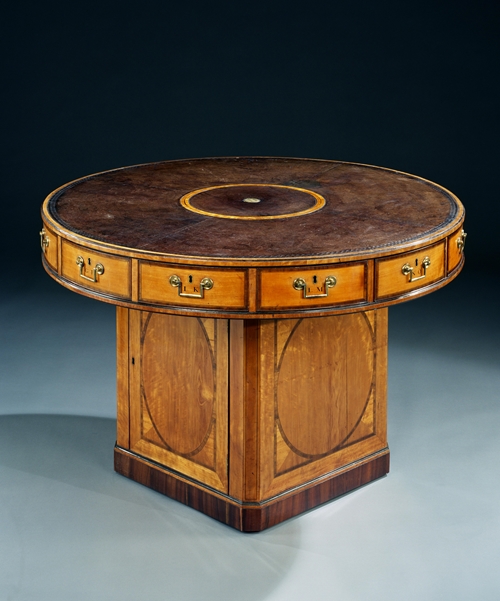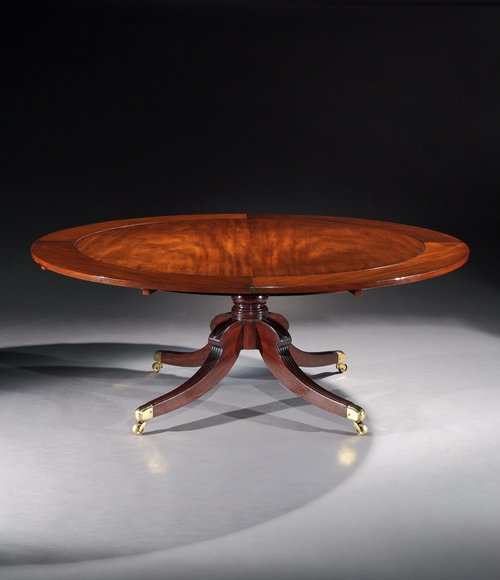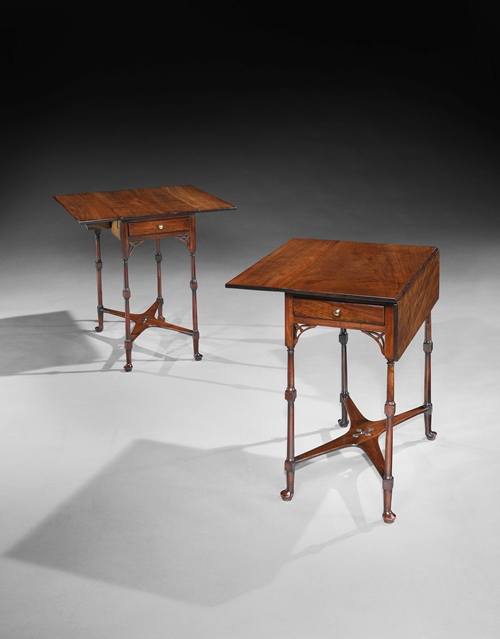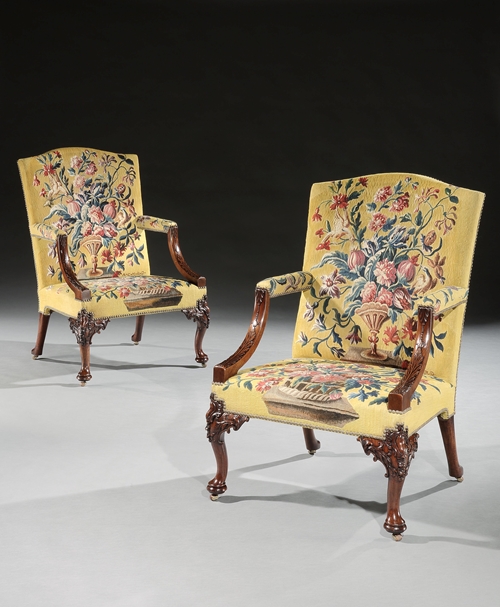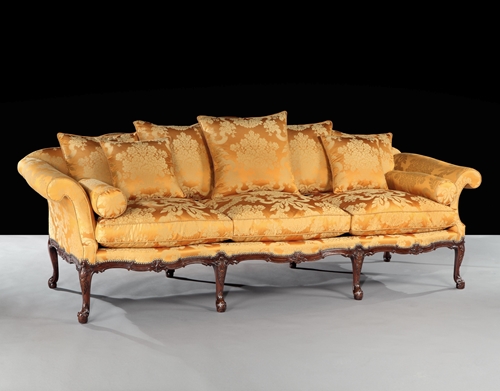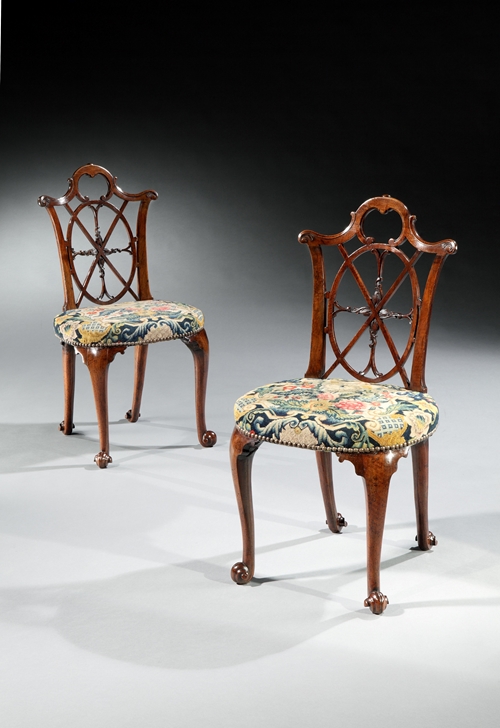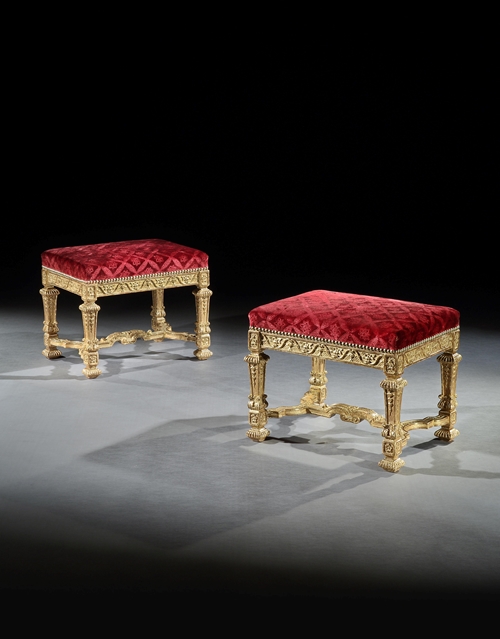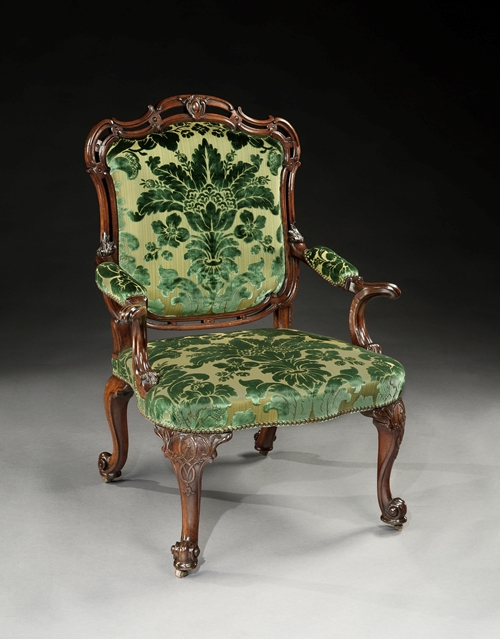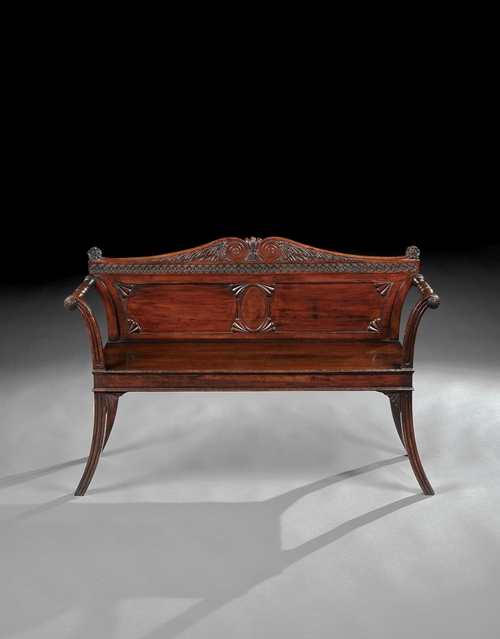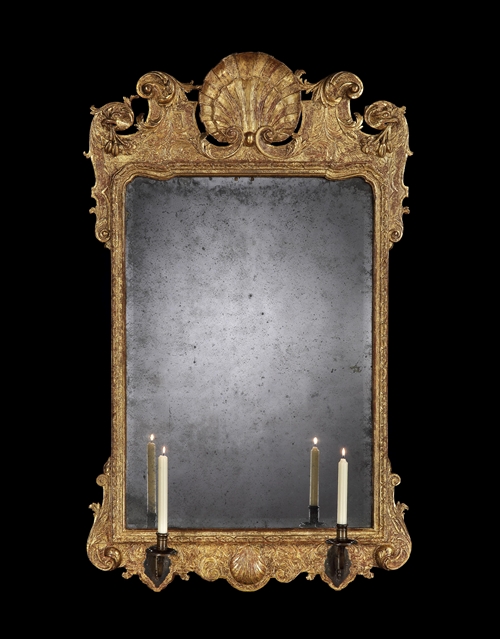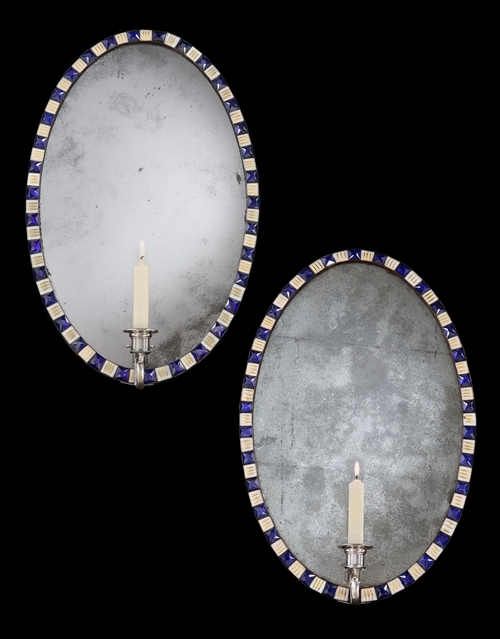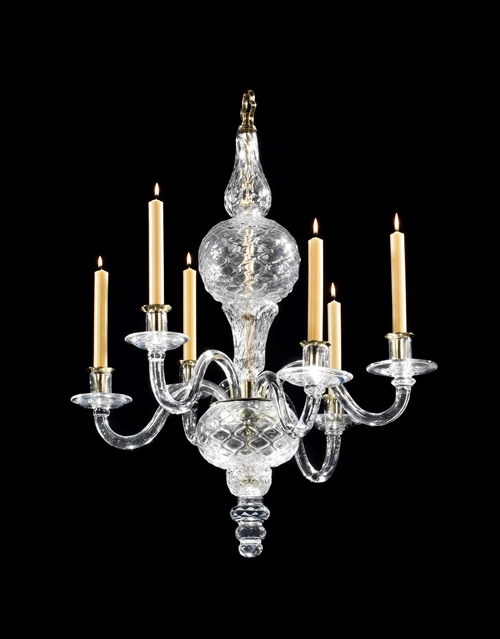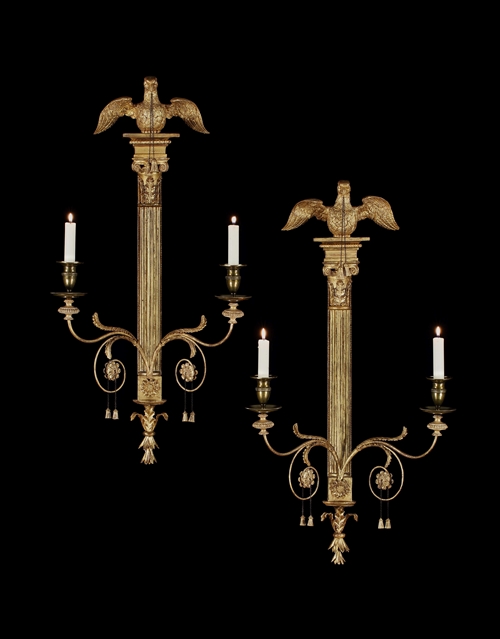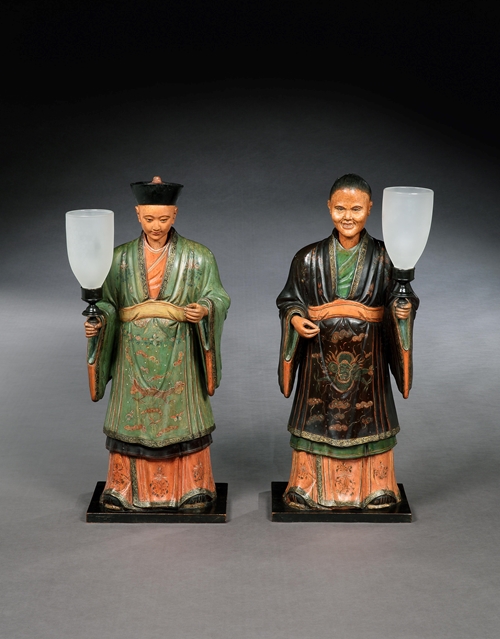An exceptionally rare and important early 18th century blue japanned double dome bureau cabinet attributed to John Belchier, the double domed top surmounted by an unusual array of carved giltwood finials modelled as birds clutching orbs, the twin mirrored doors opening to reveal an exceptionally elaborate fitted and japanned interior having a variety of shaped drawers centred around a concave cupboard with pigeon-holes and secret compartments, the velvet lined fall front writing surface with a fitted interior and central cupboard door, above two short and two long graduated drawers, on a moulded base with five decorated bun feet.
The courts of Europe had always been fascinated by the exoticism and mystery of the Orient, however, the great growth in trade through the Dutch East India Company in the late seventeenth century inflamed an insatiable demand for ‘Chinoiserie’ that was to last for most of the eighteenth century. Merchants began to bring back highly valued spices, silks and porcelain, however it was the lacquer that the cabinet makers were fascinated by and they soon began to try and recreate the rich and exotic surfaces. Their methods became known as ‘japanning’ and were popularised by the publication of 'A Treatise of Japanning and Varnishing' by John Stalker and George Parker in 1688. The treatise meticulously describes the processes for imitating various types of lacquer as well as illustrating exotic ‘Indian’ designs for the decoration of objects and remains the key source of reference for this technique even today.
John Belchier (d.1753),to whom this spectacular bureau cabinet may be attributed to, was one of the most important cabinet-makers of the 18th century and had a workshop at The Sun, on the south side of St. Paul’s Church Yard in London. He enjoyed a considerable practice that created exotic japanned and gilded furniture as well as pier glasses. Belchier received his most significant commission from John Meller at Erdigg, North Wales, in the 1730s and he also carried out important work for the Purefoy family at Shalston, Buckinghamshire. In addition to his cabinet-making skills, Belchier produced clear and mirrored glass. Records show that he supplied a quantity of glass for St. Paul’s Cathedral in the 1720s. Christopher Gilbert, author of 'A Pictorial Dictionary of Marked London Furniture1840', notes: ‘Belchier owes his high reputation to a distinguished series of bureau cabinets decorated in green and scarlet Japan or veneered with fine cuts of burr walnut’.
Japanning remained popular throughout the late seventeenth and eighteenth centuries particularly for case furniture and screens with impressive bureau cabinets, mirrors, sets of chairs and cabinets on stands most commonly decorated in black and gold with rarer examples being found in red, green, blue or even white. The most spectacular and most sought after pieces that survive today are the bureau cabinets intended for splendid display, such as this one. They were either left opened showing the richness of the complicated interiors or shut displaying the japanned exterior with the extravagantly mirrored doors reflecting the light from candles placed on the candlestick slides.
-
Provenance
The Counts Hamilton, Oversholm Castle, Sweden.
Prior to this the early provenance of this cabinet is hazy, but family tradition suggests that it was purchased in London in the early 1850’s by Axel, Count Hamilton (1787-1875).
An alternative to this theory is that the cabinet formed part of the dowry of Anna Russell Cruise whom he married in 1853 in London, and therefore it may have come from her family home, Dynan House, Swords, Co. Dublin. Other pieces from her collection remain at Oversholm Castle in Sweden.
The final account, and potentially the most exciting, is that the cabinet was originally exported to Sweden and was in fact inherited (rather than purchased) by Count Axel Hamilton. One piece of evidence to support this final theory was a piece of paper found to be securing one of the finials in place, which is written in an 18th century Swedish hand. This therefore suggests that the cabinet was in Sweden before Hamilton was in London for his marriage in the mid 1850’s.
Looking for something similar? YOU MAY ALSO LIKE
YOU HAVE RECENTLY VIEWED ITEMS
- CAN WE HELP YOU?
- +44 (0)20 7493 2341
- [email protected]

